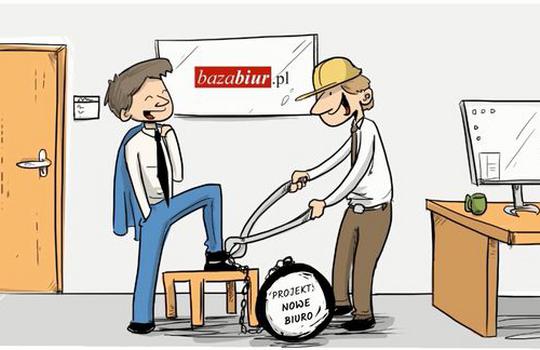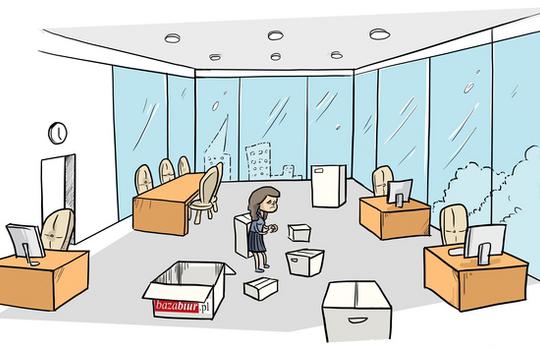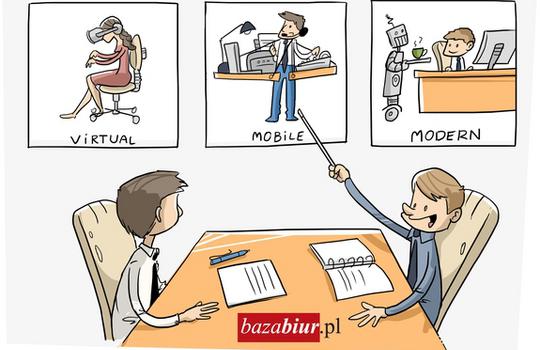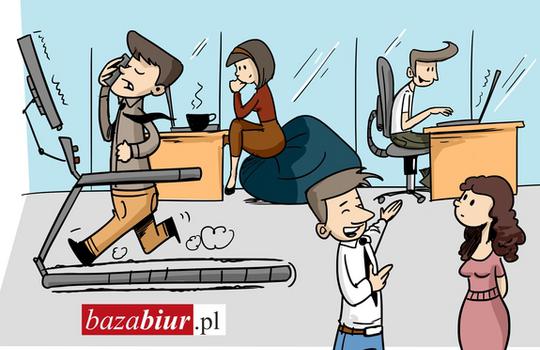How much of our time is consumed by email communication, phone conversations and formal meetings? How do such activities influence a company’s development? How much time would we want to dedicate to working in silence? How many brilliant ideas are conceived in kitchens, lifts and while waiting for coffee? Are we working individually or in groups? So what should be the starting point for selecting an ideal office?
In this article, I will describe how important it is to create a workplace strategy that ensures that the office is adjusted to the employees' needs and enhances their communication and productivity as well as helping in the optimization of real estate costs.
What do we really do at work?
Research by JLL indicate that there is a significant discrepancy between employees’ activities that consume most of their time and the activities that generate the biggest value for the company. Nearly three quarters of respondents say that analyses, discussions and brainstorming are the most effective activities. However, most of our workdays are occupied by email and phone conversations as well as formal meetings. Such activities, despite being necessary, do not contribute greatly to a company’s development.
Starting point – happiness for employees, productivity for the employer
The starting point for discussing the shape of a new office should consist of identifying the elements that create value for an organization and to put an emphasis on spatial and technological solutions that improve employee well-being. What is the goal of creating an ideal office? Primarily, the aim is to create an employee-friendly workplace that will encourage productivity and creativity as well as reflecting a company's core values and philosophy. A well-tailored office that meets all the needs of the employees allows the employer to both reduce staff turnover and acquire new talents.
Vision and workshop
The key in designing an office space is to adjust it to the company’s specifics and needs of its employees. While launching a new working environment strategy, we often organize an 'opening workshop'. It is a meeting held with a company's management during which we discuss the functioning of the new office, its planned optimization processes as well as describing the vision of the new workplace along with the working environment.
Interview with the management
The goal of such interviews is to understand the usage of current office space and underline the most pressing employee needs. During detailed interviews with local management staff, we can inspect its business approach, cultural values as well as future strategies and goals. Thanks to such interviews, we can understand clients’ requirements and local conditions. It is advised to conclude such interviews with the participation from both senior management personnel and leaders of individual departments such as HR and IT. The interviews are the first step in managing the change and to assure the team that their opinions are important and that the result of optimization process will include their needs and expectations.
Research
The next step is to conduct research on space usage based on an in-depth analysis. It allows us to understand how employees actually use the available office space. Furthermore, the research also provides an insight into the way the office space is used during working hours and provides data regarding the optimization of space usage. We analyze the potential for implementing co-shared office desks, how to meet the demand for meeting rooms, and what additional spaces should be created within the office in order to improve working comfort. The research is conducted by our “observers” who inspect the usage of particular office desks, meeting rooms and other functions.
Survey
A survey on the working place’s efficiency is conducted to measure a team’s satisfaction with its current office. The survey includes numerous questions on current working conditions as well as the preferred way of working, functions and office arrangement.
Focus groups
Creating so-called focus groups allows us to describe the required factors related to working places and, thus, enhance the operations of individual teams and departments. It enables us to identify concrete business requirements, working styles, additional opportunities as well as future expectations towards working places and potential challenges. This is our method to check opinions among employees. It presents an excellent opportunity to ask questions and obtain answers. Such sessions present a real chance to test the concept of the new office among a wider group of users. It is also a powerful tool in the change management process.
Finalization
At the end of the optimization process, we summarize all conclusions drawn up during the previous phases – the research of office space usage, a working place efficiency survey concluded with management and focus groups. We then prepare a strategy for the space’s new arrangement with a focus on different working styles, new distribution of working places, functions and the location of individual departments. We also indicate facilitators and barriers for future changes as well as drawing a map for managing this process of change. A well-prepared workplace strategy also includes project guidelines for the architect with a spatial budget.
It's not only location
Regardless of the company’s industry the most significant criteria for selecting office space are still: location, including the opportunity to commute by car, availability of public transportation, the office’s quality and price. Much focus is put on the building’s amenities and its surroundings as well as the “green solutions” and office project certification which all have a positive influence on operational costs and the working environment. Apart from such universal office space searching criteria, an increasing number of companies consider the quality of the office space, its usage and design. The concept of the Workplace Strategy – preparing a workplace environment strategy - is becoming increasingly popular in Poland and companies now follow this path more often. Why? In order to adjust their offices to the needs of employees, enhance communication, productivity, as well as strengthening co-operation and joint activities. It is well worth doing.











